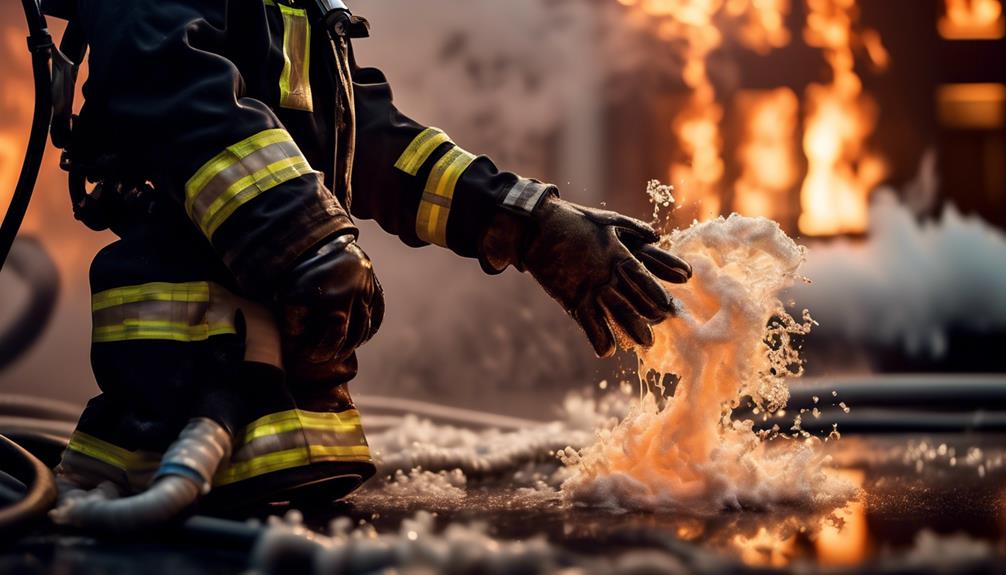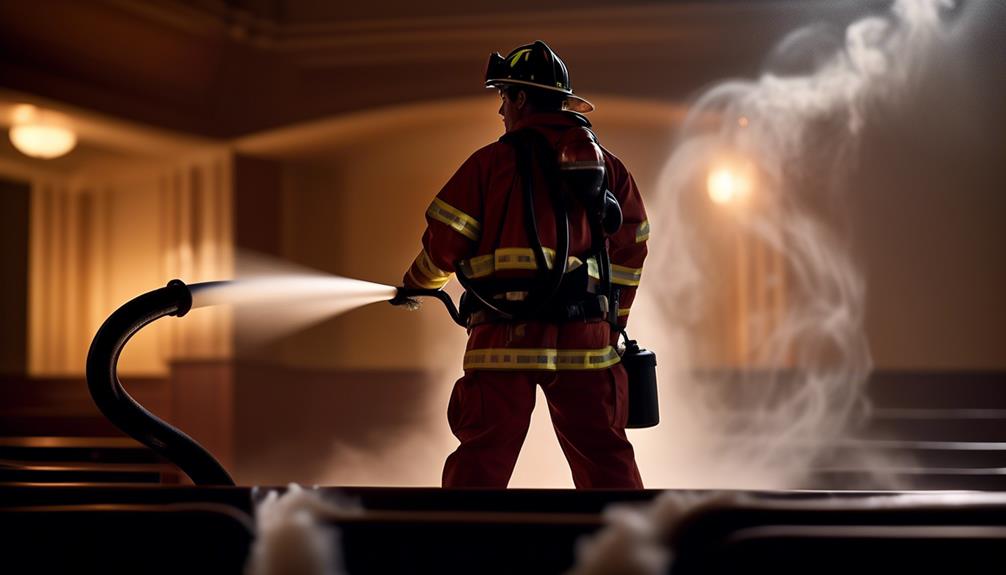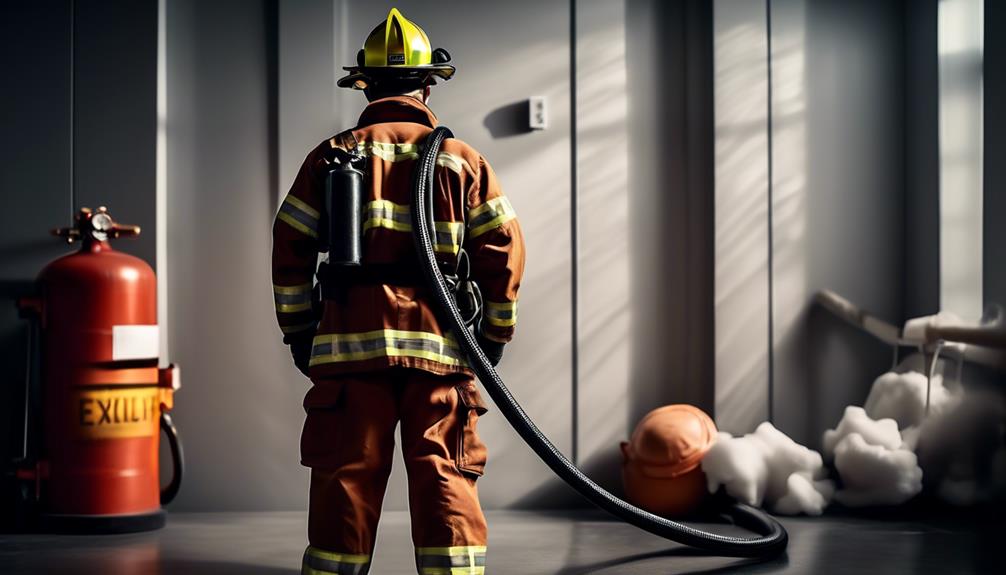Firefighting Foam Sparks Kidney Cancer Legal Battle
In recent years, the fire suppression industry has been embroiled in a contentious legal dispute over the use of Aqueous Film-Forming Foam (AFFF), a firefighting agent prized for its effectiveness against fuel fires but now linked to serious health concerns. Central to this debate is the presence of per and poly-fluoroalkyl substances (PFAS) in AFFF, chemicals which, due to their resistance to degradation, have earned the moniker 'forever chemicals.

As empirical evidence mounts, drawing connections between PFAS exposure and an increased incidence of kidney cancer among firefighters and other exposed populations, a wave of litigation has emerged. Plaintiffs allege negligence and failure to warn on the part of the manufacturers and distributors of AFFF, echoing a broader societal demand for accountability when commercial practices endanger public health.
The unfolding courtroom dramas not only signal a potential shift in industry standards but also bring to the fore the intricate balance between effective firefighting technologies and the imperatives of occupational safety and environmental stewardship. What remains to be seen is how the legal system will adjudicate these complex claims and what ramifications this will have for the future of firefighting protocols.
Understanding AFFF and PFAS

Amidst growing concerns, it is important to comprehend the nature of Aqueous Film Forming Foam (AFFF) and its constituent chemicals, per- and poly-fluoroalkyl substances (PFAS), which have been linked to serious health risks, including kidney cancer.
AFFF is a type of firefighting foam specifically designed for extinguishing fuel-based fires, known for its effectiveness in emergency response scenarios. The foam includes PFAS, a collection of synthetic chemicals prevalent in various consumer products, contributing to their durability and resistance to water, stains, and grease.
However, PFAS are persistent in the environment and accumulate in human tissue, raising alarm due to their potential adverse health effects. Research has established connections between PFAS exposure and a range of illnesses, with kidney cancer being a substantial concern for those with occupational exposure to AFFF.
Link Between AFFF and Cancer

Understanding the composition and use of AFFF and PFAS sets the stage for a deeper exploration into the serious health implications, particularly the established link between these substances and the increased risk of cancer. Scientific investigations have consistently demonstrated that PFAS, inherent in AFFF, have carcinogenic properties that pose a considerable danger to human health.
The persistent nature of PFAS allows these chemicals to accumulate in the body, leading to a higher likelihood of developing kidney cancer among individuals exposed to AFFF. Judicial proceedings are now surfacing as affected parties seek accountability for the health hazards imposed by exposure to these chemicals.
Kidney Cancer Overview

Kidney cancer, a serious and potentially fatal disease, often begins in the lining of the tiny tubes within the kidneys and can grow into a larger, more invasive tumor if not detected and treated promptly. The most common form is Renal Cell Carcinoma (RCC), which has several subtypes, including clear cell and papillary RCC. Less common types include Transitional Cell Carcinomas, which originate where the kidney meets the ureter, and Wilms Tumor, predominantly found in children.
This malignancy's prognosis and treatment vary based on the cancer stage and subtype. Early detection is crucial for successful management, typically involving surgical intervention, and may be complemented by targeted therapies, immunotherapy, radiation, or ablation. Advanced cases require more aggressive treatment strategies.
Identifying Risk Factors
Several factors can elevate an individual's risk of developing kidney cancer, including lifestyle choices and occupational exposures, such as those to AFFF firefighting foam.
The persistent nature of PFAS allows these chemicals to accumulate in the human body, potentially leading to carcinogenic effects. Occupational exposure to these substances, especially among firefighters, has been linked to an increased incidence of kidney cancer.
The recognition of AFFF as a human carcinogen by authoritative cancer research agencies underscores the severity of this risk. Consequently, exposed individuals are advised to monitor their health closely and consider medical screenings for early detection of potential kidney-related malignancies.
Legal Actions and Settlements

Amid growing concern over the health impacts of AFFF exposure, legal claims have been initiated by individuals diagnosed with kidney cancer, seeking compensation for the harm suffered due to prolonged contact with PFAS-containing firefighting foams. These lawsuits allege that manufacturers and other entities failed to warn users about the carcinogenic risks associated with AFFF adequately.
As evidence linking PFAS to kidney cancer solidifies, affected parties are pressing for accountability and financial redress. The litigation landscape has seen a surge in such cases, with the prospect of a global settlement looming.
The compensation framework under discussion suggests varying settlement amounts, reflecting the severity of exposure and the resultant health consequences. This legal battle underscores the imperative for industry transparency and the protection of public health.
Frequently Asked Questions
How Can Firefighters and Other Individuals Exposed to AFFF Minimize Their Risk of Kidney Cancer or Detect It Early?
To minimize kidney cancer risk from AFFF, firefighters should use PPE, undergo regular health screenings, and limit exposure. Early detection through consistent medical monitoring is critical for those with occupational exposure.
Are There Any Alternative Firefighting Foams or Methods Being Developed That Do Not Contain PFAS and Pose Less Health Risk?
Yes, research is underway to develop PFAS-free firefighting foams and alternative methods that reduce health risks. These include environmentally friendly foams and advanced fire suppression technologies not reliant on harmful chemicals.
What Kind of Medical Monitoring or Health Support Is Available for Firefighters Who Have Been Routinely Exposed to AFFF?
Exposed firefighters may have access to medical monitoring programs that include regular health screenings, cancer surveillance, and educational initiatives to mitigate risks associated with occupational PFAS exposure.
How Are the Environmental Impacts of AFFF, Such as Groundwater Contamination, Being Addressed Alongside the Health Concerns?
Efforts to mitigate the environmental impact focus on preventing groundwater contamination by regulating use, developing safer alternatives, and remediating affected areas through advanced filtration systems and containment strategies.
Can Family Members of Individuals Who Worked With AFFF Also Be at Risk of Health Issues Due to Secondary Exposure, and What Measures Can They Take for Protection?
Family members of AFFF users may face secondary exposure risks. Protective measures include avoiding contaminated clothing and implementing strict hygiene practices to reduce the likelihood of chemical transmission and potential health issues.
Conclusion
The correlation between AFFF usage and the incidence of kidney cancer, attributed to PFAS exposure, has instigated a reevaluation of firefighting protocols and the initiation of legal proceedings.
These actions reflect a growing awareness of the health hazards posed by PFAS and the necessity for comprehensive regulatory oversight.
The pursuit of litigation emphasizes the demand for accountability and the imperative to safeguard public health against enduring environmental contaminants.




